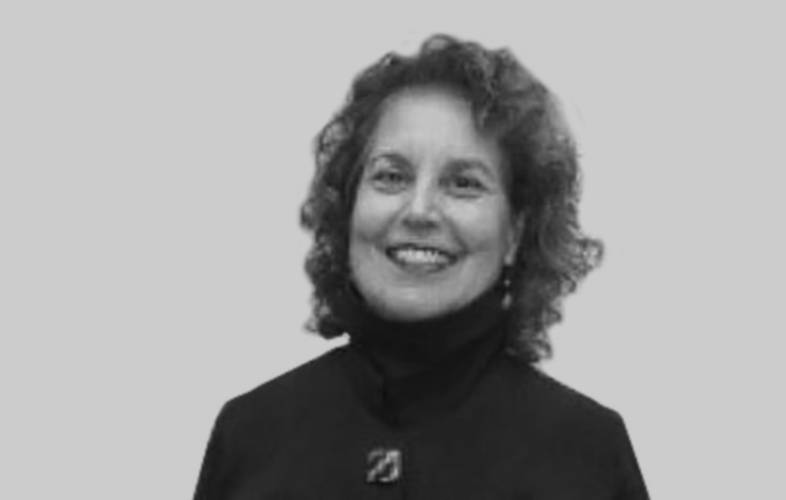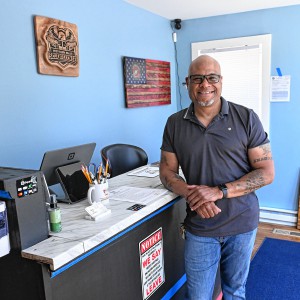My Turn: Children will learn racism if that’s what they see and hear

Andrea Ayvazian FILE PHOTO
| Published: 09-24-2023 2:54 PM |
Our granddaughter Fiona was about a year and a half old when she was playing with my husband and me in our backyard and a bug began circling around her. Her language skills were still quite limited at that time, and so we were surprised when she started to yell “A bee, a bee!” and ran around the yard trying to escape what she thought was a very scary insect.
We had never seen this behavior before, and we had no idea she knew the word “bee,” so we asked her parents about it when they picked her up. They told us that months before, they had been outside with Fiona and her babysitter when a bee began circling them. The babysitter, who was allergic to bees, began to yell “A bee, a bee” and ran around trying to get away from the bee.
Apparently the whole incident took less than 30 seconds to resolve. Yet it made a huge impression on Fiona — an impression so strong that Fiona was able to reenact the whole scene months later.
Children learn through what they see and hear around them. The process starts early. What happens around them makes an imprint on their sharp little brains, which act like psychic sponges absorbing the cues, words, tone, and behaviors in their environment.
Children absorb messages, words, and life lessons about people and the world almost through osmosis. They are observant and smart. They form impressions through the feelings that surround them, the images they see, the tone of voices they hear, the stories read to them, and the people who care for them. They sense safety, danger, comfort, fear, love, and caring through all their sensitive little emotional and cognitive antenna that are always alert, and always absorbing what is happening around them.
The popular song from the musical “South Pacific” has it all wrong. The lyrics include these lines:
You’ve got to be taught
Article continues after...
Yesterday's Most Read Articles
 Longtime Orange public servant Richard Sheridan dies at 78
Longtime Orange public servant Richard Sheridan dies at 78
 As I See It: Between Israel and Palestine: Which side should we be on, and why?
As I See It: Between Israel and Palestine: Which side should we be on, and why?
 Retired police officer, veteran opens firearms training academy in Millers Falls
Retired police officer, veteran opens firearms training academy in Millers Falls
 Deerfield’s Tilton Library expansion ‘takes a village’
Deerfield’s Tilton Library expansion ‘takes a village’
 Big turnout expected Sunday for 14th annual WMass Mother’s Day Half Marathon in Whately
Big turnout expected Sunday for 14th annual WMass Mother’s Day Half Marathon in Whately
 High Schools: Big sixth inning propels Franklin Tech past Smith Vocational (PHOTOS)
High Schools: Big sixth inning propels Franklin Tech past Smith Vocational (PHOTOS)
To hate and fear,
You’ve got to be taught
From year to year,
It’s got to be drummed
In your dear little ear
You’ve got to be carefully taught.
You’ve got to be taught before it’s too late,
Before you are six or seven or eight,
To hate all the people your relatives hate,
You’ve got to be carefully taught!
In fact, children do not need to be carefully taught. They reflect what they see modeled around them and repeat what they have heard. They open their hearts to people different from their family if they have seen family members open their hearts to a diverse group of friends, associates, neighbors, and caregivers. Children do not need to be carefully taught — they are picking up lessons, signals, cues, hints and prompts all around them all the time.
If what children are seeing and hearing is prejudicial, biased, filled with stereotypes, or incorrect, they will absorb that misinformation. Children do not need to be carefully taught to reflect the racism around them, they need to be carefully taught anti-racism attitudes and actions through the words and behaviors of the adults in their lives.
Beverly Daniel Tatum, Ph.D., the former president of Spelman College and author of the bestselling book “Why Are All the Black Kids Sitting Together in the Cafeteria and Other Conversations on Race,” explains the process of involuntary absorption of misinformation about people and the world that children experience this way: It is like growing up in a smoggy city — whether you want to or not you will breathe in smog during the course of your day, week, year, lifetime.
It simply happens. If children are surrounded by smog, they will breathe it in and some day in the future cough it back up.
Children learn not only by what they see and hear but also by what they do not see or hear. For white children, this is called racism by omission. If white children are raised in a monocultural environment, being exposed to a diverse world later in life will prove jarring, and they will be ill-prepared for the experience.
Children learn by omission. Stories that are not told, history that is not shared, images that are not inclusive, classrooms that are not diverse, teachers, doctors and other professionals that are not multi-ethnic — all of this is absorbed by their physic sponge minds and help shape who they are, what they say and do, and how well- or ill-equipped they will be to function in a multicultural world.
Back in the 1990s, when I crisscrossed the country leading anti-racism workshops with Dr. Tatum, we used to say that because overt racism was so unacceptable in society it had simply mutated to take less offensive forms: coded language, subtle messages, dog whistles, and hidden meanings that white people recognize.
But I would no longer say that is true. Racism in this country, on the personal, cultural and institutional levels, is not covert any longer. Racism is now clearly expressed, flaunted, modeled, and repeated.
Children do not have to be carefully taught to learn racism, they just need to watch TV and overhear the news, attend a school that bans multicultural books and distorts the history of slavery in this country, listen to candidates running for president who spew vitriol about people of color and undocumented refugees, or live in a monocultural community.
“You’ve got to be taught/to hate and fear, You’ve got to be taught/From year to year/It’s got to be drummed/In your dear little ear/You’ve got to be carefully taught.”
Don’t believe it. In a racist society like ours, the opposite is true. Children need role models who are allies to people of color speaking about their inclusive values and anti-racism activism. White kids need dolls and action figures of colors and books that feature kids and families of color. White kids need to see pediatricians of color, have teachers of color, and play with children in diverse settings.
Children have to be carefully taught not to absorb the toxicity around them. They need to be raised in an environment that actively promotes and models anti-racism. Then they can be safe, healthy and flourish.
The Rev. Andrea Ayvazian, Ministerial Team, Alden Baptist Church, Springfield, is also founder and director of the Sojourner Truth School for Social Change Leadership.

 From Global to Local: Mother’s Day and peace, 2024
From Global to Local: Mother’s Day and peace, 2024 My Turn: Valuing the grave work of funeral service providers
My Turn: Valuing the grave work of funeral service providers Martha Jorz: Stop supporting UMass and Raytheon
Martha Jorz: Stop supporting UMass and Raytheon Erik Hoffner: Solar panels not a good use of farmland
Erik Hoffner: Solar panels not a good use of farmland
